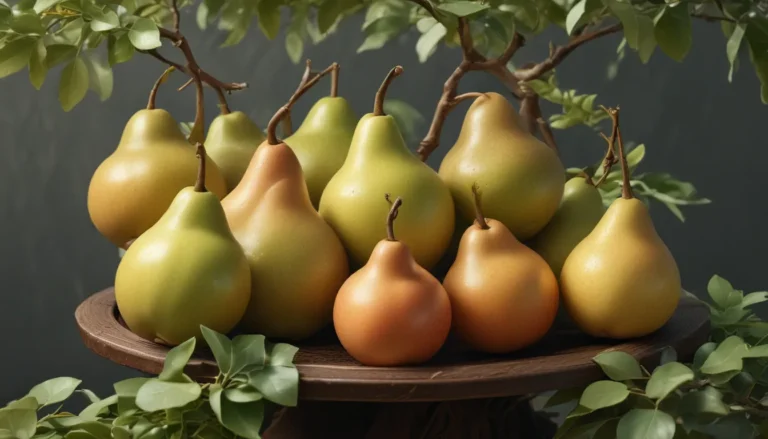A Comprehensive Guide to Pruning Blooming Plants in Spring

Spring is here, and with it comes the vibrant colors of blooming perennials that brighten up our landscapes. After the cold winter months, these blooming plants are a sight for sore eyes. However, to ensure the health and vigor of these plants, proper pruning is essential.
But how does one go about pruning these springtime bloomers without sacrificing their beautiful blooms? It may seem like a dilemma, but with the right knowledge and tools, you can successfully prune your plants without compromising their beauty.
In this guide, we will cover everything you need to know about pruning blooming plants in spring. From the reasons why pruning is beneficial to the tools you’ll need, when to prune, and how to make your cuts, we’ve got you covered. Let’s dive in!
Why Prune Blooming Plants?
Before you start pruning your blooming plants, it’s essential to understand why it is beneficial to do so. Here are three key reasons why pruning is essential:
Aesthetics
Pruning your blooming plants can help maintain their shape and form, even if they don’t have any damaged or diseased branches. By selectively removing branches in critical spots, you can transform the appearance of the plant without extensive cutting.
Health
In addition to aesthetics, pruning promotes the overall health of the plant. Removing damaged, dead, or diseased branches not only improves the plant’s appearance but also eliminates vulnerabilities that can lead to pest infestation and disease. By redirecting the plant’s energy towards new growth, pruning enhances its health and vitality.
Vigor
Pruning also helps maintain the balance between a plant’s roots and shoots. By removing excess shoots, the plant can redirect its energy towards new growth, resulting in a more vibrant and lush specimen.
What You’ll Need
To effectively prune your blooming plants, you’ll need the right tools. Here are some essential tools you’ll need for pruning:
Personal Protective Equipment
Ensure you have safety glasses and puncture-proof gloves to protect yourself while pruning. Safety glasses prevent debris from getting into your eyes, while puncture-proof gloves protect your hands from cuts.
Hand Pruners
Hand pruners are ideal for cutting small branches less than an inch thick. Make sure to use bypass pruners for clean cuts and prolonged blade sharpness.
Loppers
Loppers are perfect for cutting branches up to a couple of inches thick. Opt for bypass loppers for live branches and anvil loppers for deadwood.
Pruning Saw
A pruning saw is necessary for cutting thick branches that loppers can’t handle. Ensure the blade is longer than the limb’s thickness for optimal cutting.
Isopropyl Alcohol
Use isopropyl alcohol to sterilize your tools in between cuts and prevent the spread of pathogens from plant to plant.
When to Prune
For most plants, pruning just before bud break in spring is ideal to trigger new growth for the growing season. However, the best pruning time depends on the plant’s bloom window.
- If a plant blooms before mid-June, wait until after flowering to prune.
- For plants that bloom in summer or later, prune in late winter to early spring before bud break.
How to Make Your Cuts
Each plant has its unique pruning needs, but here are general guidelines for making cuts:
- Remove damaged, dead, or diseased branches promptly.
- Establish a central leader if needed.
- Remove crossing or rubbing branches.
- Maintain the plant’s desired shape by removing misaligned branches.
- Remove visually distracting branches.
- Use the three-cut method for heavy branches.
- Avoid removing more than a third of the plant’s aboveground mass in one go.
By following these guidelines, you can effectively prune your blooming plants and promote their health and vitality.
Conclusion
Pruning blooming plants in spring may seem challenging, but with the right knowledge and tools, it can be a rewarding experience. By understanding the benefits of pruning, having the necessary tools, knowing when to prune, and how to make your cuts, you can ensure the health and vigor of your plants. So, roll up your sleeves, grab your pruners, and get ready to transform your garden this spring!
Have any questions or pruning tips to share? We’d love to hear from you in the comments below!
For more pruning know-how, check out these additional guides:
- The Basics of Pruning Shrubs and Woody Plants
- When to Prune Old vs New Wood and How to Tell the Difference
- Your Guide to Fall and Spring Perennial Cutbacks and Pruning
Remember, pruning is an art that takes practice and patience. As you gain experience, you’ll become more confident in your pruning skills and be able to enjoy a beautiful and healthy garden year after year. Happy pruning!





